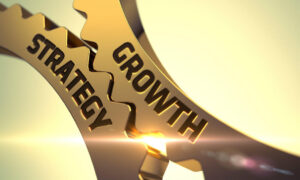
Want to Engage Future Leaders? Empower Them
Leaders, do workforce engagement issues keep you up at night? If not, here’s a powerful wake-up call from Gallup. Last year, the global employee engagement

Leaders, do workforce engagement issues keep you up at night? If not, here’s a powerful wake-up call from Gallup. Last year, the global employee engagement

Think back to your first day of work with your first major employer. You probably arrived early on your first day, ID card ready, and

The last year and a half has been a reckoning for workplaces; companies addressed the paradigm-shattering COVID-19 crisis, while also addressing issues of social injustice

What do Apple, Disney, Verizon, Google, and Starbucks have in common? They’re all multi-billion dollar companies, and they all offer tuition reimbursement to their employees.

Emojis are both a language and a technology. Cultivate’s recent study into just how we use them shows how creatively we’ve adapted to this hybrid

The impacts of COVID-19 and the measures governments and organizations are taking to contain it right now are unprecedented. The hourly breaking news headlines of

What does your workplace look like in 2020? The workplace starting off this new decade is a whole different animal than the workplace was in

By 2025, millennials will make up 75 percent of the global workforce. While it’s tough to assign broad characteristics to an entire generation, millennials are

“Loyalty means leaving when you are no longer motivated,” writes Lee Caraher in her new book The Boomerang Principle. At the heart of Caraher’s quote

“Culture eats strategy for breakfast,” as the saying goes. Employees today want to feel part of something bigger than themselves and their jobs. Millennials are

Scroll through your social media feed, and it’s highly likely you’ll see a post that bashes Millennials and the generation of kids today. Usually, there’s

Millennials are the largest demographic in the workplace now—comprising 38 percent of the U.S. workforce today, and as much as 75 percent of the workforce

We live in a world that is constantly in “on” mode. Smart phones, computers, emails, and phone calls; even after you clock off from work,

The world in which we live is going through fundamental shifts – simultaneous changes that are literally turning everything, as we know it, on its

Figuring out how to retain the best employees remains a top priority for every business owner. This shouldn’t be a surprise: according to a study
As long time readers know, I tend to be pretty opinionated. Recently, I’ve gotten sucked into a conversation thread on LinkedIn about job hopping. It’s
Today, Millennials (individuals born after 1980) are a highly targeted advertising market. It’s not hard to see why brands are vying for attention from this
There are more millennials among today’s applicants than any other generation, and they’ll be 75 percent of the workforce by 2025. On this week’s #WorkTrends
There are more millennials among today’s applicants than any other generation, and they’ll be 75 percent of the workforce by 2025. On this week’s show,
I’ve written a lot about Millennials and the massive impact they are having on the future of work. The largest generation in today’s workforce, they
Is striking a balance between work and life a priority for you? You are not alone. 45 percent of employees said they don’t have enough
Almost every organization has a firm understanding of how important diversity is. There is an abundance of research out there that confirms more diversity results
We’re in the middle of a historic evolutionary leap driven by digital innovation and software technology. And it’s created a generational divide that holds both
Recruitment data’s importance is continuing to grow for strategic workforce planning, specifically when considering the growing number of young workers joining the labor pool. With
Recruitment data’s importance is continuing to grow for strategic workforce planning, specifically when considering the growing number of young workers joining the labor pool. With